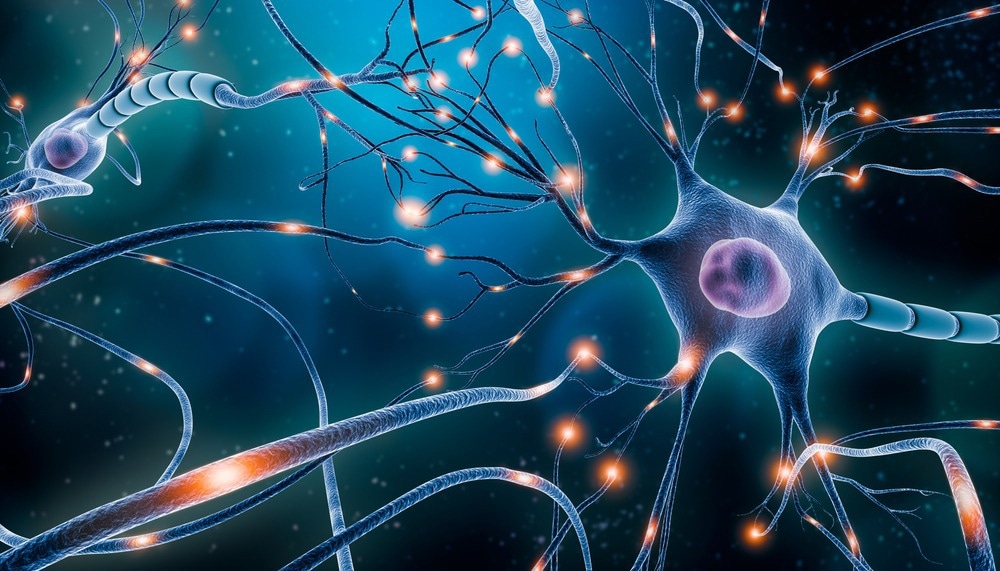Reviewed by Alex SmithNov 30 2022
Neurons are the basic units of the brain and nervous system, the cells that receive sensory input from the outside world, give motor commands to the muscles, and convert and transmit electrical signals at every step in between.
 Image Credit: MattLphotography/Shutterstock.com
Image Credit: MattLphotography/Shutterstock.com
Neurons, also known as nerve cells, are made up of three major components: the cell body, dendrites, and the axon, which is a long, thin protrusion responsible for communication with other cells.
Neurons have limited ability to recover on their own when they are injured by degenerative illness or injury. Restoring brain networks and normal function is thus a huge task in tissue engineering.
Prof. Orit Shefi and PhD student Reut Plen from Bar-Ilan University’s Kofkin Faculty of Engineering have created a revolutionary strategy to address this obstacle by utilizing nanotechnology and magnetic manipulations, one of the most inventive strategies for creating neural networks. Their findings were recently reported in the Advanced Functional Materials journal.
The scientists used magnetic iron oxide nanoparticles to transform neural progenitor cells into self-contained magnetic units in order to create neural networks. They next subjected the progenitor cells, which are known to mature into neurons, to a series of pre-adjusted magnetic fields and remotely guided their movement within a three-dimensional, multi-layered collagen substrate that replicates the natural properties of biological tissue.
They developed three-dimensional “mini-brains”—functioning and multi-layered neural networks that mirror elements present in mammalian brains—using magnetic manipulations.
The cells stayed in place after the collagen solution solidified into a gel, thanks to the remotely administered magnetic fields. The cells matured into mature neurons within a few days, established extensions and connections, displayed electrical activity, and flourished in the collagen gel for at least 21 days.
This method paves the way for the creation of 3D cell architecture on a customized scale for use in bioengineering, therapeutic, and research applications, both inside and outside the body. Since the 3D neural networks we created simulate innate properties of human brain tissues, they can be used as experimental “mini-brains” and serve as a model for the study of medicinal drugs, for investigating communication between tissues, and as a way to build artificial networks for interfaces between engineering and biological components.
Reut Plen, PhD Student, Bar-Ilan University
“In addition, the model suggests an interesting prospect for injecting such a gel, which contains cells, in its liquid state, introducing it into the nervous system and organizing the cells into the correct structure with the assistance of magnetic forces. The advantage of using this method is that magnetic fields can affect cells located deep inside the body in a non-invasive manner,” added Plen.
The introduction of magnetic particles into cells, particularly nerve cells, raises concerns about the safety of potential medicinal uses.
The issue of safety is important and we've devoted much thought and research into it. In the first step, we tested the effect of different particles on cell health in culture. In addition, we coated the magnetic particles with a biocompatible protein. The coating creates a buffer between the magnetic element and the cell and encourages penetration of the nanoparticles.
Orit Shefi, Professor, Bar-Ilan University
Orit Shefi explains, “Importantly, iron, the building block of the nanoparticle, exists naturally in the body so it isn't a foreign substance. Additionally, the same gel with magnetic particles has been tested in our laboratory and found safe to use in animal models.”
The utilization of magnetic nanoparticles for diagnostic and imaging reasons, as well as in cases of severe injury, has already been approved by the US Food and Drug Administration. The Bar-Ilan research group’s actions create a chance to enhance the technology for future therapeutic usage.
Shefi and Plen conclude, “This is only the beginning. Our novel method of creating ‘mini-brains’ opens the door to finding solutions for various neurological impairments which will hopefully improve the quality of life of numerous patients.”
Journal Reference:
Plen, R., et al. (2022) Bioengineering 3D Neural Networks Using Magnetic Manipulations. Advanced Functional Materials. doi.org/10.1002/adfm.202204925.